MELBOURNE, Fla. — Inside a secretive Patrick Air Force Base laboratory, Airman 1st Class Cynthia A. Schroll prepares batches of complex chemicals alongside futuristic-looking fume hoods and a white cabinet labeled “Acid” in large red letters.
Wearing blue rubber gloves and a white lab coat, Schroll is a rare breed in the U.S. military: She earned a doctorate in analytical chemistry from the University of Cincinnati. She has written two books. She has a patent in her name.
And Schroll conducts classified lab work at the Air Force Technical Applications Center. The organization detects and analyzes nuclear explosions detonated by foreign countries, utilizing a sprawling network of more than 3,600 sensors deployed around the globe.
RELATED
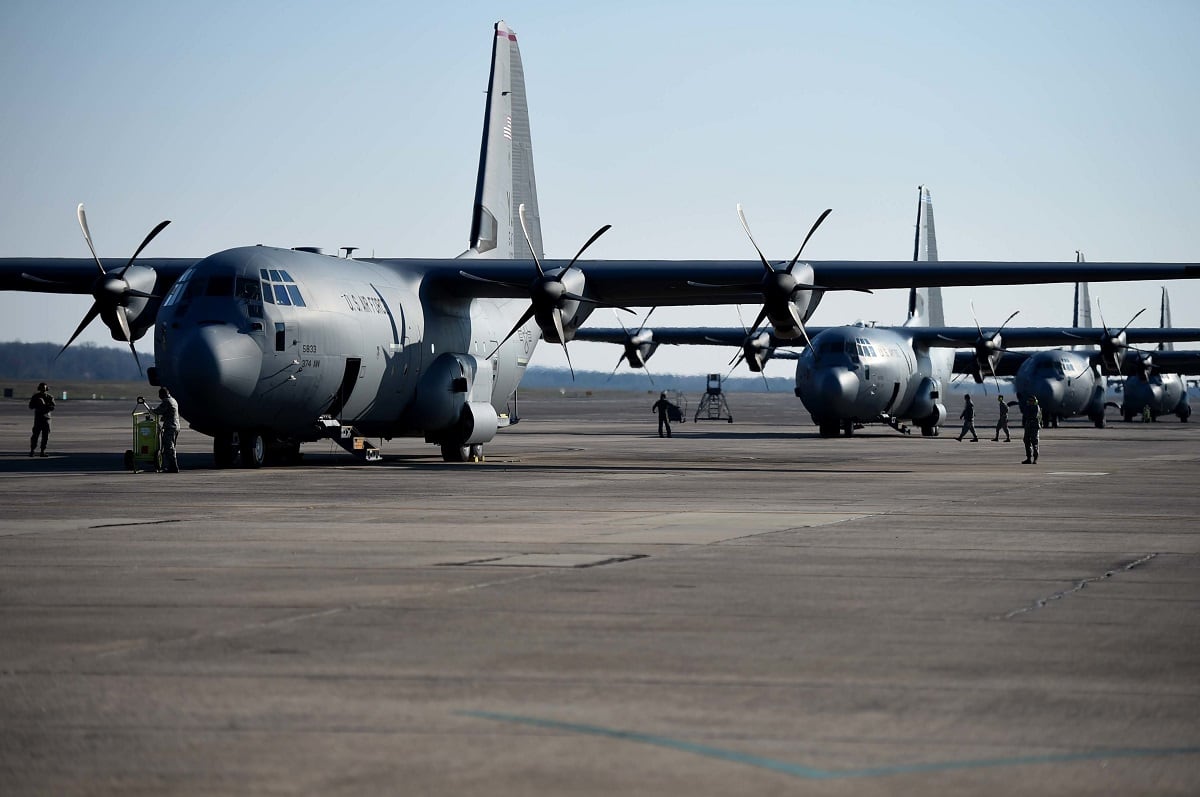
"We've got them in space. We've got them at sea. We've got them in the air. We've got them on land on all seven continents, to include Antarctica. And we even work in the cyber domain," said Col. Chad Hartman, who commands AFTAC.
AFTAC is tasked with monitoring nuclear treaty compliance and any "nuclear surprises" from rogue nations or terrorists. Its scientists assessed Iran's nuclear program in 2015 and identified both of North Korea's underground nuclear tests in 2016 — producing reports that made their way to the Oval Office.

The agency also monitored the 1986 Chernobyl nuclear power plant accident in the former Soviet Union; verified North Korea’s first nuclear test in 2006; and scrutinized Japan’s 2011 Fukushima Daiichi nuclear power plant disaster.
"We're the only government organization whose primary mission is to do that. To be able to go after that problem set requires an incredible amount of equipment, an incredible amount of capability — that's on a global scale," Hartman said.
"And, some of the best and brightest this nation has to offer," he said.
The AFTAC logo is a lithium atom surrounded by the slogan, "In God We Trust: All Others We Monitor.
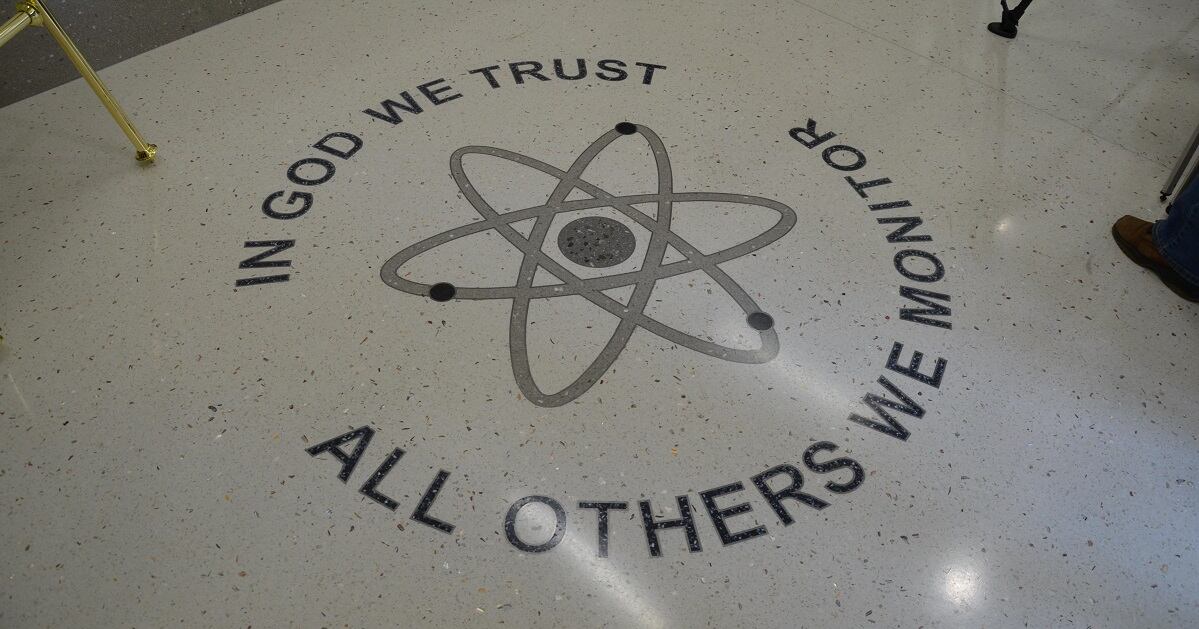
Classified laboratory activities
March marked the five-year anniversary of AFTAC’s $158 million campus at Patrick AFB — which was the largest construction project in the Air Force at the time. Officials gave Florida Today a rare glimpse inside AFTAC’s surveillance laboratory.
The tour was the most in-depth media peek since the facility's March 2014 ribbon-cutting ceremony, said Susan Romano, AFTAC's public affairs chief.
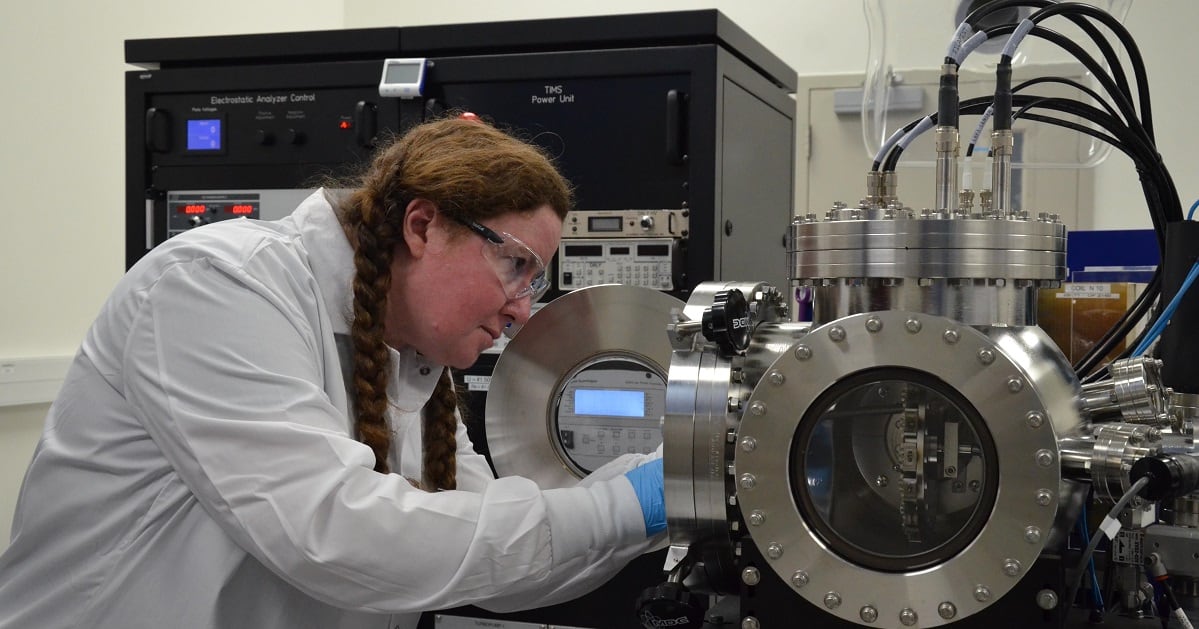
Scenes inside AFTAC's state-of-the-art, 38,000-square-foot Ciambrone Radiochemistry Lab resemble settings from a Stanley Kubrick sci-fi movie.
Rotating red lights in hallway ceilings warn that persons without security clearances are present. Technicians wearing white lab coats perform atom-by-atom analyses. Visitors use shoe-cleaning machines and step on white "tacky mats" before entering rooms, ensuring their soles are free of debris.
Charts of the nuclides — resembling periodic tables of elements seen in high school chemistry classrooms — are posted on various walls.
"We use them on a daily basis," said Brett Mapston, flight chief of nuclear measurements.
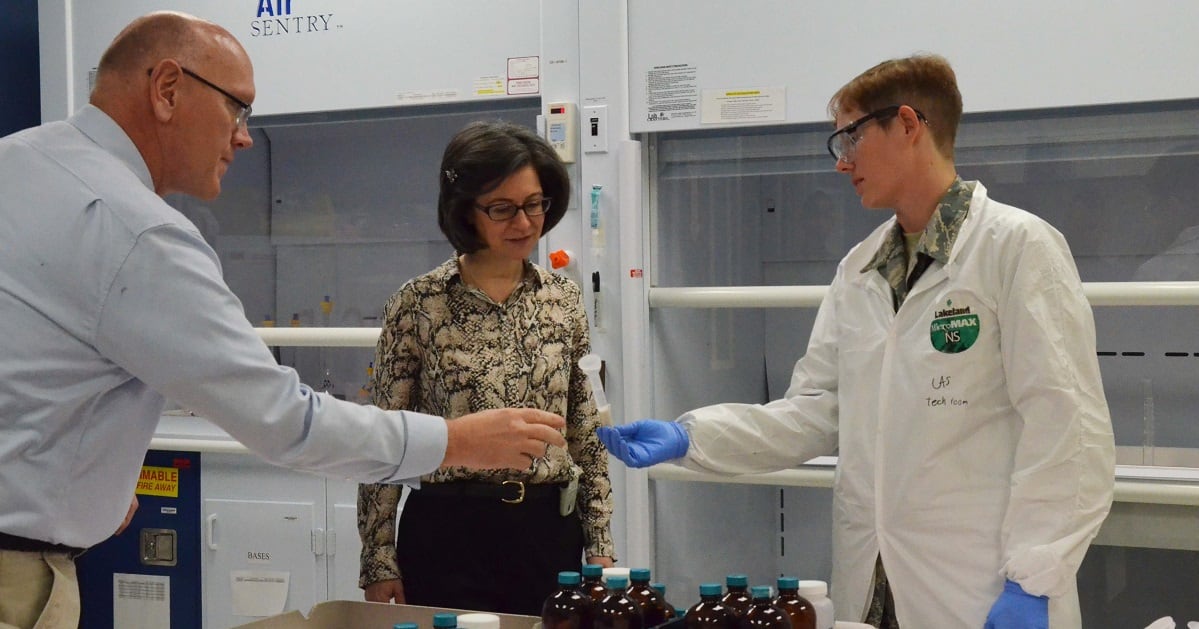
Aerial filter samples collected by WC-135 Constant Phoenix “nuke sniffer” aircraft enter the lab through an exterior door marked “Caution: Radioactive Materials.” Encased in white plastic sleeves marked with bar codes, these samples are routed to various rooms for an array of scientific procedures.
In one room, a futuristic chrome-metal contraption (a thermal ionization mass spectrometer) converts samples into vapor and accelerates them, isolating isotopes of uranium and plutonium. Scientists use these nuclear forensics to collect post-explosion warhead information.
"We can tell you what type it was and what grade it was," said Wesley Schuler, flight chief for mass spectrometry.
Before leaving the Ciambrone Radiochemistry Lab, visitors step inside a Canberra radiation contamination detector for a full body scan. A robotic-sounding woman's voice counts down from 15, then announces, "Clean," when the scan is complete.
‘MacGyvers’ repair aging sensors
At the AFTAC component repair facility, or CRF, airmen tinker with seismometers inside a large shop equipped with work benches, toolboxes, computers, coils and a cornucopia of electronics and wiring.
Romano nicknames these mechanically adept airmen “MacGyvers” after television’s secret agent Angus MacGyver. Oxford Dictionaries defines MacGyver as an informal verb: “make or repair (an object) in an improvised or inventive way, making use of whatever items are at hand.”
AFTAC's 709th Technical Maintenance Squadron refurbishes the network's seismometers, both in the workshop and in the field. If these devices detect an underground disturbance, they transmit data to the Space Coast for analysis.
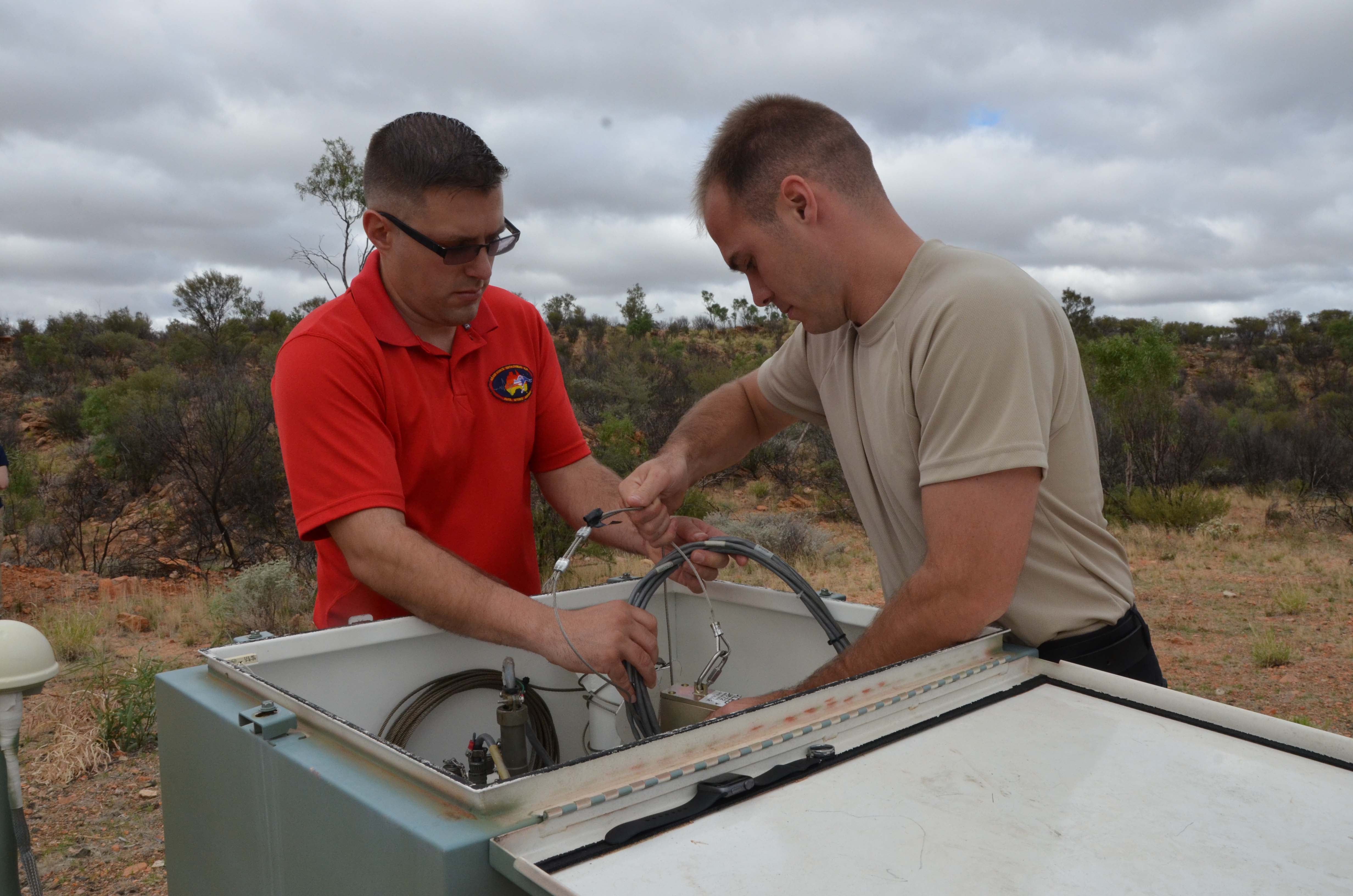
Many were designed during the 1950s and '60s, so replacement parts are scarce or must be custom-built, said Douglas Dale, CRF flight chief.
On top of that, Dale cited Moore's Law, which states the number of transistors on a microchip roughly doubles every two years. Seismometers must fit within narrow bore holes, so airmen labor to keep computerized components up to date.
Master Sgt. Joseph King estimated AFTAC airmen can fabricate about 200 different components. In 2011-12, he trekked to frozen Antarctica to maintain diesel generators, heaters and solar panels at two unmanned sensor sites.
King has also helped install 10 seismometers at AFTAC's array in Morocco, at the edge of the Sahara Desert in North Africa.
"The young men and women who work in that shop have global responsibilities for maintaining that equipment, all over the world. They go to some of the most remote places on the planet," said Jim Whidden, AFTAC director of staff.
"They are remote because it's important for the sites that we select to be seismically quiet, so that the data has as little background noise as humanly possible. So that what we see is literally just the earth shaking, and we don't have cultural noise. There are no highways or construction activities or railroads nearby," Whidden said.
"And these sites are literally out in the middle of nowhere," he said.
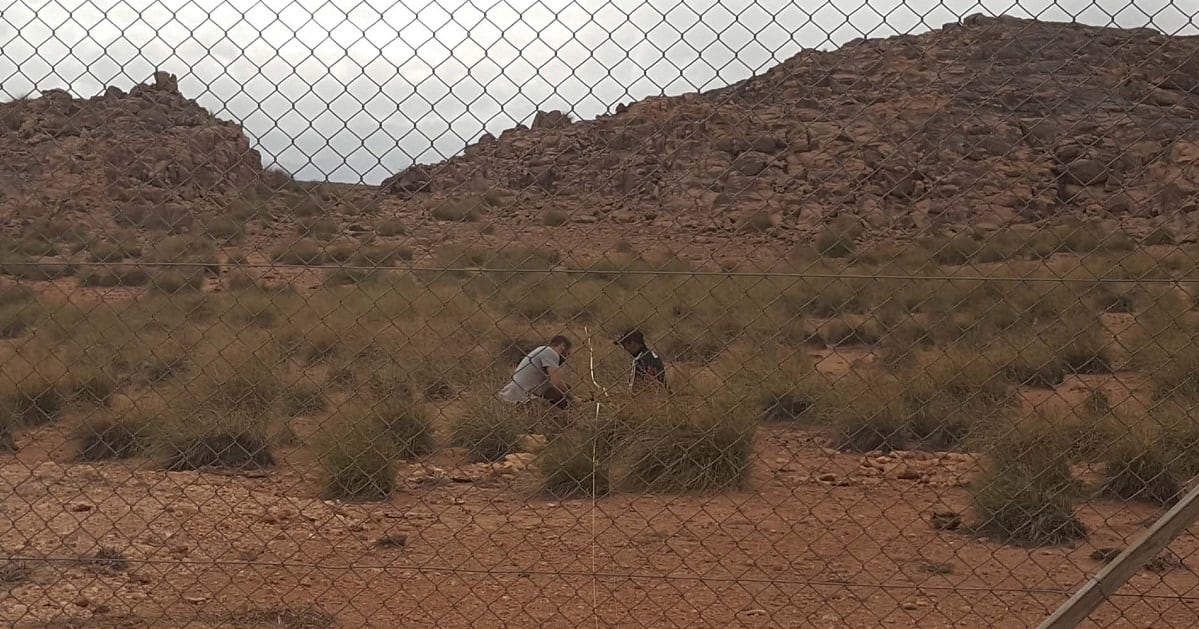
Recruiting and retaining scientists
The original AFTAC building at Patrick AFB dated to the 1950s. This outdated, asbestos-ridden structure sat closer to State Road A1A and was deemed vulnerable to attack after the Sept. 11, 2001, terror attacks.
Much of the iconic structure — which was fronted by a row of display rockets during the Space Race — fell to the wrecking ball by spring 2016.
Today, Chief Master Sgt. Michael Joseph is AFTAC's command chief. He and Hartman agree on their mission's key challenge amid the digital job market: Recruiting and retaining talent.
"We're competing against the Googles and the Apples of the world. And while we can never come close to offering the financial incentives they will, what we do offer is an incredible purpose. A higher purpose, to be able to come in and attack problems that are incredibly meaningful," Hartman said.
"We have this incredible array of hardware all over the world. But at the end of the day, we're kind of a software company," he said.
What’s more, Romano said, retired Air Force personnel who return to work at AFTAC as civilians, like Schuler and Dale, provide institutional mission knowledge that newcomers lack. North Korea’s twin nuclear tests in 2016 made for the organization’s “busiest ops tempo” in the previous 20 years.
"The world is only getting more complex. It's going faster. It's getting more complex and more consequential. So the challenges they're going to face 10 to 20 years from now are probably going to dwarf some of the things we're dealing with today," Hartman said.
“So we’re trying to make sure we posture ahead, and stay ahead of the curve and equip them for success.”





